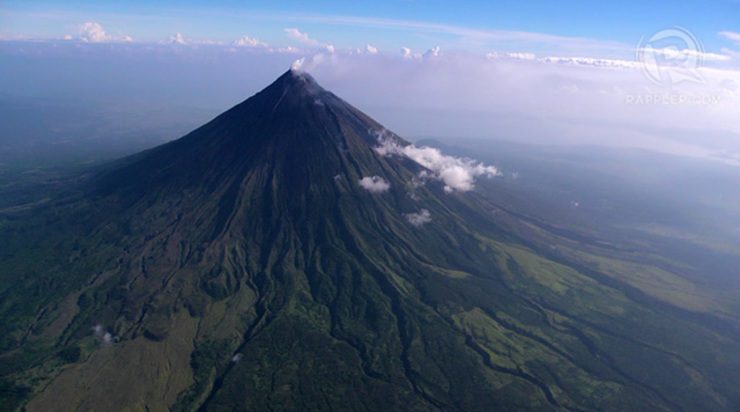SUMMARY
This is AI generated summarization, which may have errors. For context, always refer to the full article.

MANILA, Philippines – Mayon Volcano’s crater glowed again in the early hours of Wednesday, October 15, indicating that the volcano may be gearing up for an eruption soon.
A weak crater glow, one that can only be detected by sensitive measuring equipment, was observed by the Philippine Institute of Volcanology and Seismology (Phivolcs) at around 3 am, said volcanologist Ed Laguerta.
The glow was caused by gas from new magma slowly rising to the crater, Laguerta told Rappler in a phone interview.
This is different from the white steam that Mayon has been spewing out for the past weeks or white steam from water escaping the molten rock, he added.
“This is one of the indicators that there is ongoing activity in the volcano. This makes us sure that we cannot lower the alert level,” he said.
If the crater glow continues, accompanied by lava flows and stronger and continuous volcanic earthquakes and tremors, Phivolcs may raise the Alert Level to 4.
Alert level 4 means that a hazardous eruption may occur within hours or days.
‘Changing moods’
Mayon’s “changing moods” make it difficult to predict if the pattern of unrest will be sustained, said Laguerta.
The crater glow observed on Wednesday is only the second crater glow observed since Phivolcs hoisted Alert Level 3 over the volcano on September 15 when the crater glowed red.
On Sunday, October 12, Phivolcs spotted viscuous lava flow 350 meters in length moving slowly down the Bonga Gully on the southeast slope of Mayon.
The following day, October 13, the agency recorded two volcanic earthquakes. On October 14, there were two volcanic earthquakes and 4 rockfall events. On Wednesday, October 15, only one rockfall event was observed.
Volcanic earthquakes and rockfall events indicate that magma is rising to higher portions of the volcano. The magma movement causes rocks on the earth’s surface to move, creating earthquakes. Rising magma also disturbs unstable rocks, causing them to fall.
Another pattern observed by Phivolcs is the low amount of sulfur dioxide being emitted from the crater. In the past two weeks, the sulfur dioxide emission has been lower than baseline levels of 500 tons per day.
Laguerta had earlier explained that this means the crater is clogged, trapping gas from new magma inside the volcano. More trapped gas means increased pressurization inside the volcano which could eventually lead to an explosive eruption. – Rappler.com
Add a comment
How does this make you feel?
There are no comments yet. Add your comment to start the conversation.